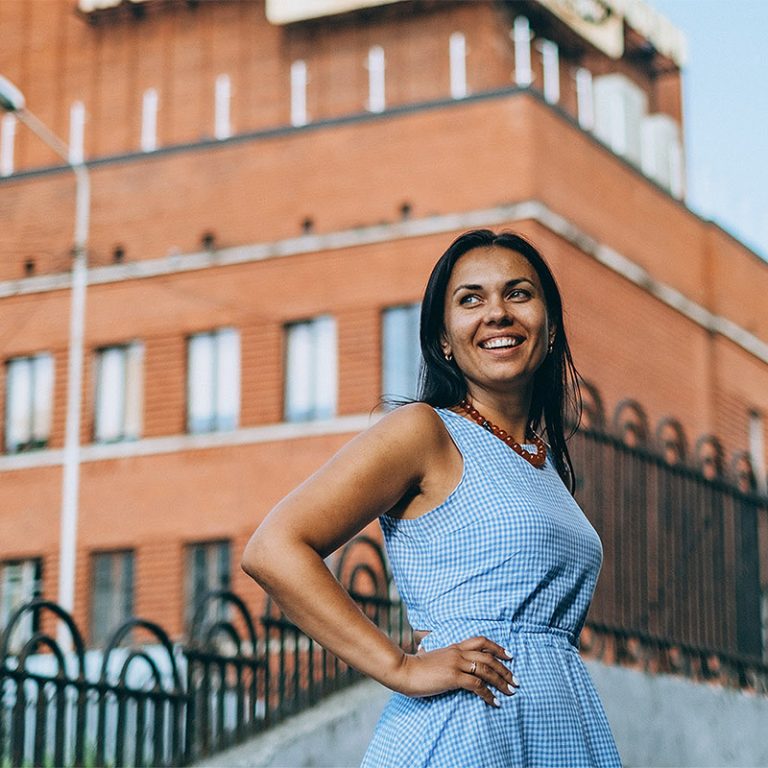The Hnat Khotkevych Palace of Culture in Lviv, as well as the district in which it is located, is undergoing a period of change and renewal. In 2018, a new team began revitalization and searched for a new concept for the cultural center. The palace, which was built from fundraising almost 100 years ago, is again collecting money for renovations. It is slowly returning to the map of Lviv’s cultural institutions.
The history of the Palace began with the construction and funds raised by workers in need of cultural activities. Lately, during the difficult times of the pandemic and quarantine restrictions that began in 2020, the administration of the Khotkevych Palace managed to raise twice the funds needed to co-finance new planned projects.

Interwar fundraising
The current palace of culture was built as a leisure club for workers in Lviv. It took into account all of their interests — in addition to cultural entertainment, there was bowling, a buffet, a library, a board game room, a smoking lounge, separate dressing rooms for men and women, and even the apartment of the director who lived in the building.
The idea to build a club for workers came in 1924, after their protest due to the lack of space for entertainment and leisure. The city did not have enough money for the construction but allocated a land plot. Therefore, the trade union committee decided to collect 1% of salaries. The idea was implemented 10 years later. Despite the economic crisis at that time, the workers themselves took part in the construction, helping out in the evenings and even on weekends. All the work was fully completed in 1938. A notable example of functionalism architecture, the palace was designed by then fashionable architects Tadeusz Vrubel and Leopold Karasinskii. They were co-architects of a number of other Lviv buildings in the modernist and art deco styles: the building of the city’s electrical institutions (now the Security Service of Ukraine Department on Vitovskii Street), a residential building for employees of the Lviv gmina (community) on Zhovkivska Street, the House of the medical ward, and villas of “The Professor’s Colony”.
Gmina
A unit of territorial municipality in Poland.Tetiana Prodan, deputy director of the palace, notes that both from the very beginning and now, the community creates a cultural policy:
“The palace represents the history of fundraising. This is one of these fundamental points of reference, the continuity of which we are trying to maintain and which is consistent not only with a team that invests but also with the concept of Community Development. This is civic consciousness. The Khotkevych Palace was created and still exists on those principles.”

Since 1938, a cinema had been operating in the building. During Soviet times, the workers’ club was transformed into the tram-workers’ club. Later, historical vicissitudes changed names and individual activities in the palace, but despite everything, culture was always created here. It was created under various signs, flags, and ideologies.
Under the patronage of a multidisciplinary figure
The palace is located in the historical district of Lviv called Pidzamche. For a long time, artisans lived there. Later there were workers of factories and plants.
During the times of political instability and the change of power in the 1930s, the club used to be a platform for expressing the mood of citizens. In particular, in 1936, the Communist Party of Poland and western Ukraine held an anti-fascist Congress of cultural figures here, which was attended by representatives of the intelligentsia from Poland, western Ukraine, and Belarus. Tetiana Prodan says:
“The institution was not just a cultural center for leisure time, but a center in which certain meanings were built and certain political moods and moods of resistance were formed.”
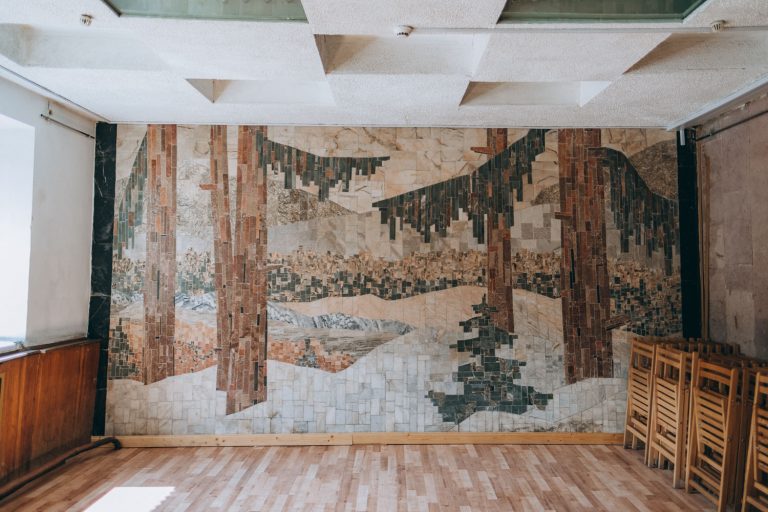
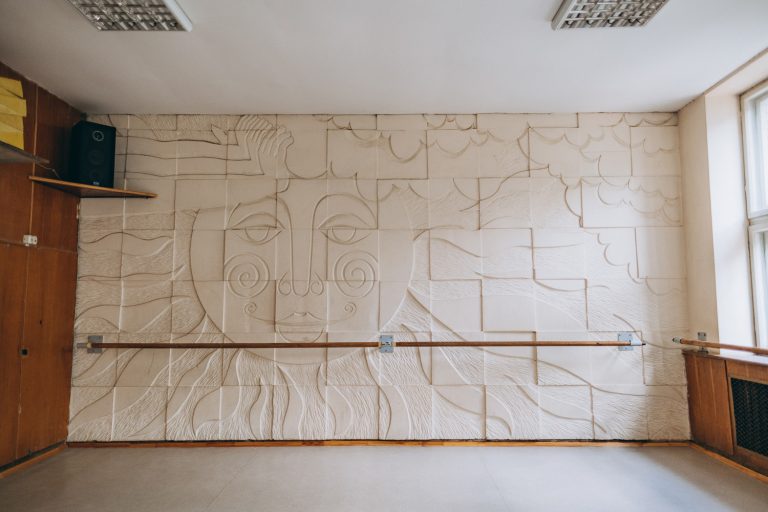
slideshow
During the German occupation, the Judenrat, the governing body of the Jewish community that lived in the Lviv ghetto, worked here. In Soviet times, the palace was named after NKVD agent Mykola Kuznetsov. Because of this, the institution was popularly called “kuznechik” (grasshopper). In the 1990s, during the resumption of Ukraine’s independence, it was renamed after Hnat Khotkevych.
People's Commissariat of Internal Affairs (NKVD)
The department is the predecessor of the Ministry of Internal Affairs of the USSR, which existed before 1946.Khotkevych’s name was chosen because he was an all-round gifted person. He was a writer, a composer, an ethnographer, a historian, an art critic, a theater-goer, an engineer, and a public and political figure. He was born in Kharkiv and lived in many regions that were then part of different empires. For some time, he lived in Lviv, then in the Hutsulshchyna and Bukovyna regions, Kyiv and Voronezh. In 1938, Hnat Khotkevych became a victim of Stalin’s terror. He was shot on falsified charges of espionage.
“The representative of Galician Piedmont could not afford to work in one industry. He had to cover as many areas of culture as possible in order to present ideas to the growing nation, which would then follow them. Choosing the name of an institution is not just an action, but how the subject of culture reacts to another ideology and how it appears in the process of creating this cultural policy. We are not limited to children’s clubs, we want to see the Khotkevych Palace as a platform for creating culture.”
Ukrainian Piedmont
A metaphor for the national liberation movement centered in Lviv in the Halychyna region. It follows the example of the Italian region of Piedmont, where the liberation of the country from foreigners and the unification of Italian lands began.With the decline of industry in the 1990s, Pidzamce became a somewhat depressed area. However, the community and cultural institutions are now trying to change this. In particular, additionally, to the Khotkevych Palace, former industrial facilities are being restored — the premises of the Lviv plant of radio-electronic medical equipment (REME) and the so-called Jam Factory, which are being transformed into contemporary art institutions, as well as offices and workshops.

How does the Khotkevych Palace exist?
Imitating the patron of the palace, gifted in various fields, the institution has become a platform for the creativity of young musicians, actors, artists, writers, and dancers. Tetiana Prodan emphasizes the importance of locations for talent development:
“The task of our center is to be an opportunity place for debutants to realize themselves, because you never know if a person will become a star. At first glance, all this is prepared for such small stages. Everyone starts with something small. Everything starts due to a certain job, mistakes, trials, so it is very important to have this infrastructure for debutants.”
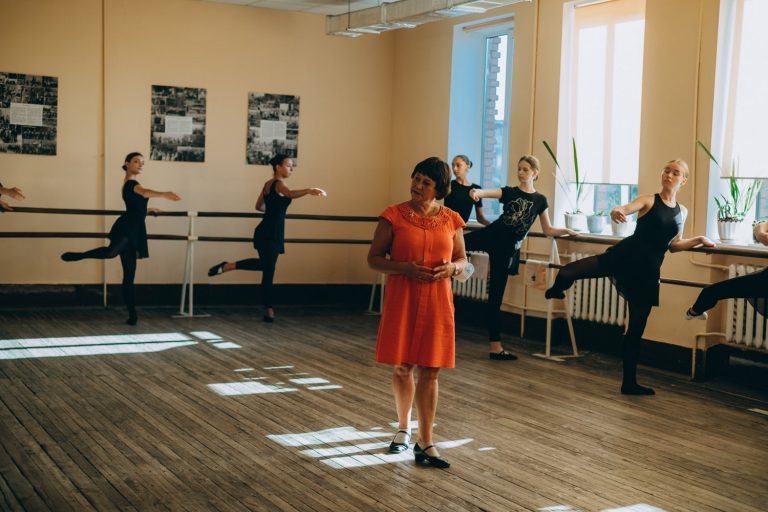
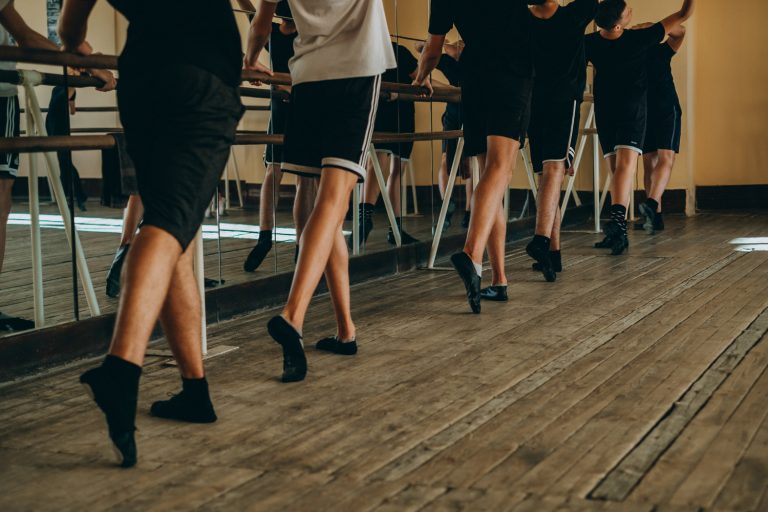
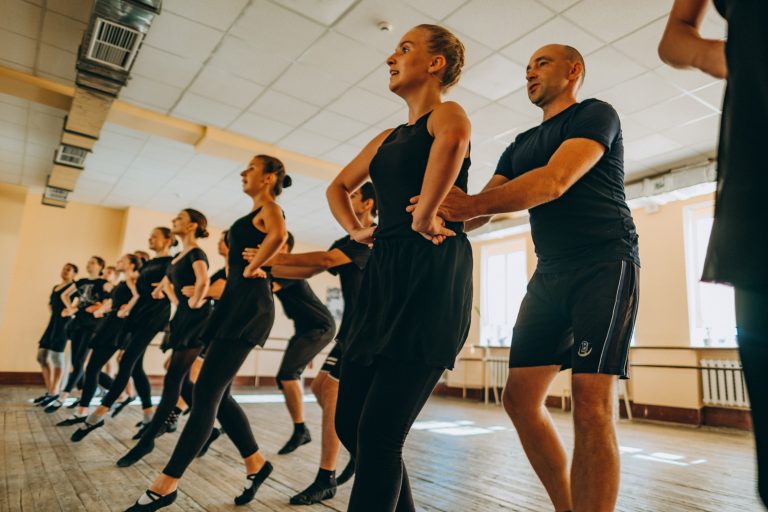
slideshow
Back in 1947, the club created the dance ensemble called “Mriia”, which still exists today. In 1956, its participants starred in the Songs Over the Dnieper musical film. Oleksandra Onyshkevych, acting head of the palace of culture, says that their graduates sometimes return to the palace as teachers, and former dancers now bring their descendants:
“This is such a family ensemble. Entire generations have been coming here. If there were grandparents, now their grandchildren and great-grandchildren come.”
Adults dance in “Mriia”. The ensemble “Flowers of Ukraine” unites children. In addition to folk dances, the palace has a contemporary dance club, vocal and visual studios, two theater studios, and a film commission sector: a city organization that promotes Lviv as a location for film making and advises in the field of film production. The satire theater called “Under the bridge” appeared in the palace, where scenes for the Halychyna KVN League were prepared. The institution is also a venue for literary events, in particular one of the locations of the Book Forum. Yurii Andrukhovych, Yurii Vynnychuk, and Viktor Neborak communicated with their readers here.
KVK
"Club of the Funny and Inventive" — popular humorous team game.In 2015, Lviv became a UNESCO City of literature. The Khotkevych Palace hosts the program. This sector of creative development promotes reading, literary tourism, book publishing, and translation activities. Another sector implements a program of literary residency for Ukrainian and foreign authors and translators. Invited writers will stay in specially prepared apartments to get better acquainted with Lviv and to write about the city.
The Khotkevych Palace is constantly expanding its activities and now, in addition to creative areas, foreign languages are studied. Workshops and lectures are held. In 2020, the palace opened a gallery for aspiring artists. The Domus theater of immigrants, which was created by Natalia Menshikova, a director from Crimea, also found its place here. From time to time, a troupe of the Lviv Opera and Ballet Theater rehearses in the Palace. The Plast center is also located here.
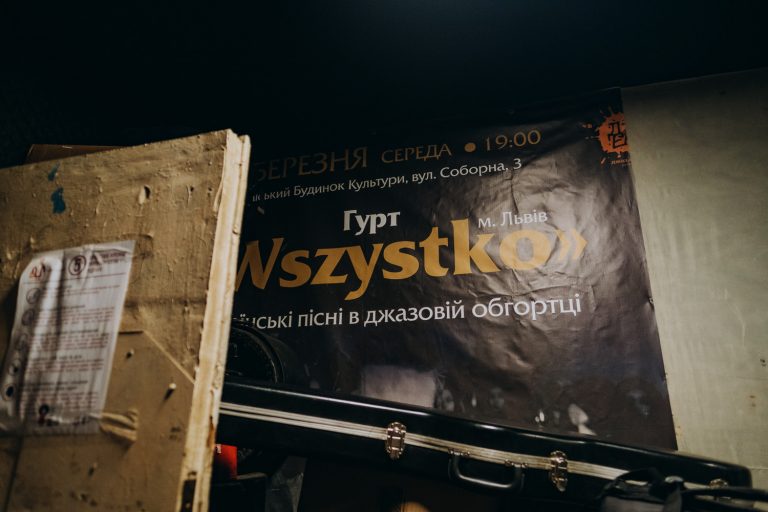
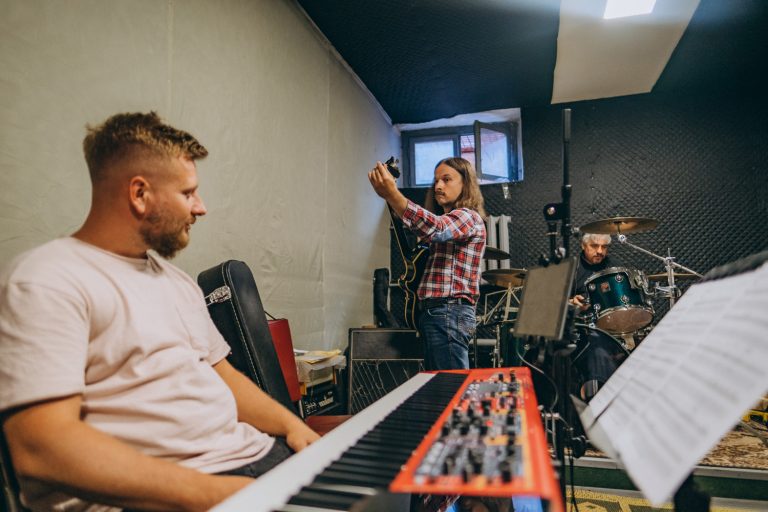
slideshow
In 1980–1990s, the Palace of Hnat Khotkevych was one of the first stages for future musical legends such as Dead Rooster, Hadiukin Brothers, Pikkardiiska Tertsiia, Ruslana, and the entire creative Chubai family including the poet Hrytsko and his children Solomiya and Taras who is the leader of the group Plach Yeremiii. In years when free-thinking musicians could not perform everywhere, there was a place for them in the palace. Right here, in the basement of the palace of culture, the musical underground created its immortal hits.
The selection stages of the All-Ukrainian Festival “Chervona Ruta”, which was founded in 1989 and named after the iconic song by Volodymyr Ivasiuk took place in the Khotkevych Palace. After 2018, long-time residents began returning to this music center. The head of the palace of culture says that representatives of various groups that started their activities here in the 1990s are again offering collaboration:
“The development of the cultural environment of the 1990s began in the Khotkevych Palace. Now they are coming back. Young groups are also coming and want to study here. They come here for the creativity, for the atmosphere.”
The Pikkardiiska Tertsiia vocal formation has had its own rehearsal base here for more than 20 years, as well as the group Wszystko, which revives old songs, in particular by the performer and inter-war composer Bogdan Vesolovskyi. According to the palace managers, this echoes the concept of the institution which is to give the historical space new meanings.

Functional transformation
The Palace was owned by Lvivelectrotrans until 1997, when it was taken over by the Lviv City Council. But even after the cultural institution began to develop, it became a permanent base for festivals. It was not popular among residents who lived in the neighborhood. As the head of the palace, Oleksandra Onyshkevych, recalls, some Lviv residents say that their children perceive the building as a prison, as if it is closed and inaccessible. They want to change this stereotype first of all.
The revitalization of the cultural institution began in 2018 after the election of new leadership. At first, we worked on a trusting atmosphere in the team. After all, about 70 employees, some of whom have been working here for decades, were somewhat wary of the new top managers. But when developing a new development strategy through 2025, they took into account the opinions of all their colleagues. Oleksandra says that today’s revitalization team is professional and results-oriented:
“For two years, first of all, we have been growing trust in the team, in all employees, in order to explain to them that we came to help them. We have come to help, restore, update and preserve historical values and to add something new and relevant.”
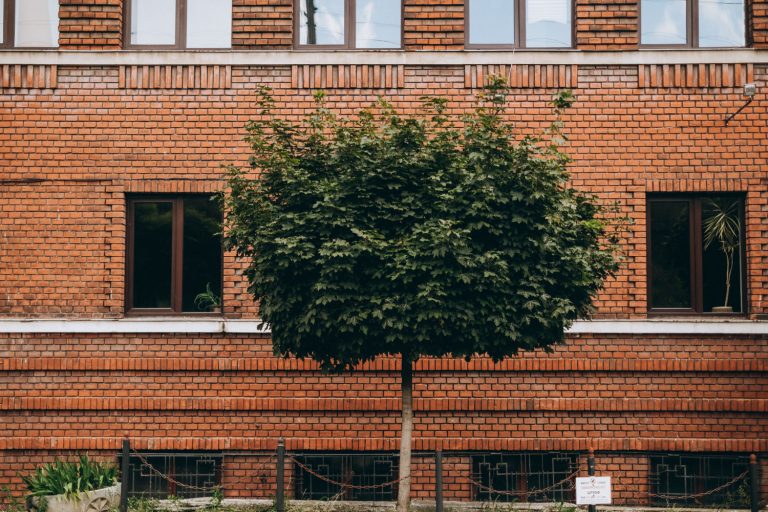
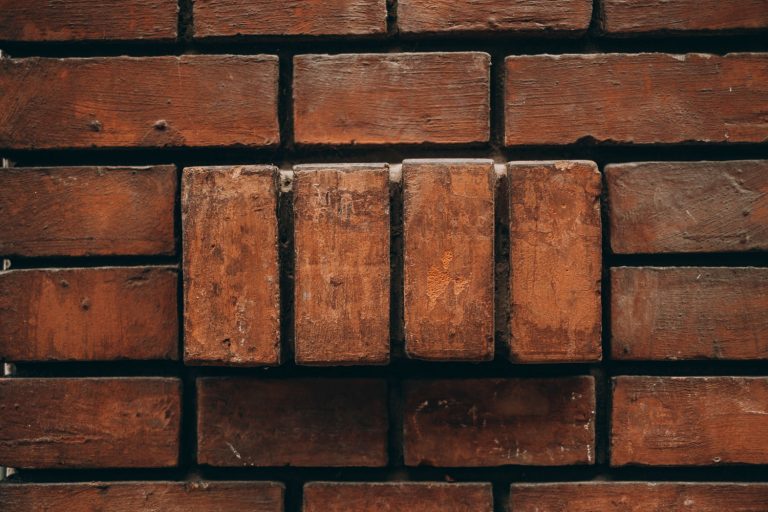
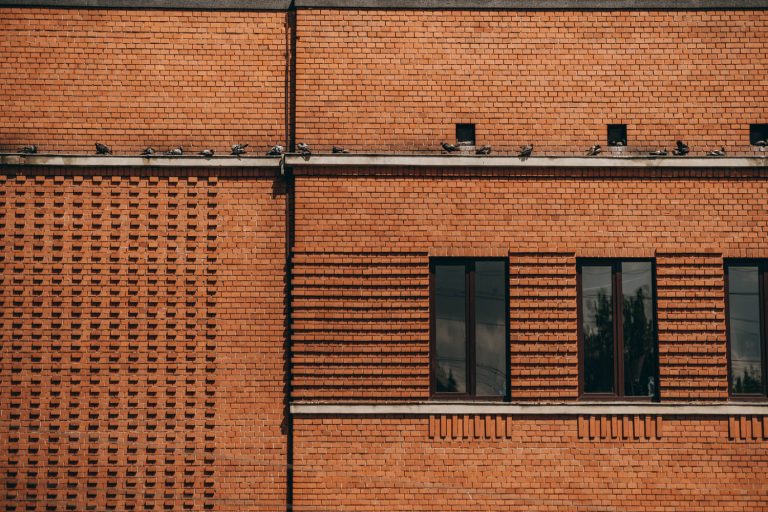
slideshow
The main components of the Khotkevych Palace development strategy encompass four areas: meaning, infrastructure, team, and communication. Meaning stands for preserving cultural heritage, traditions and creating space for new ideas. The infrastructure of the palace should be convenient and free of charge, with the arrangement of public space and patio. The team, as defined in the strategy, consists of creative, motivated professionals who are constantly learning, improving, and keeping their finger on the pulse of social changes. In addition, the palace should become a decent place of work for them. The purpose of communication is to popularize the brand of the Khotkevych Palace, increase the target audience not only among residents but also tourists.
These four directions visualize different colors: burgundy, which echoes the color of bricks, is infrastructure; green refers to the semantic content; orange is communications; and yellow is the color of the team. They became the basis of the brand book for creative studios and groups. According to the new strategy, the goal of the palace is to become a competitive modern cultural institution that can attract the widest possible audience, offer innovative education, and claim to be a leader in cultural trends. Changes continue in the building, as well. The palace building is a monument of local significance, so all repairs must be balanced and coordinated. The roof and hall in the building are undergoing reconstruction.
Some of the work is financed by the city. Some projects were supported by the community, which voted for them on the public budget of Lviv. Studios and classrooms have already been renovated. The outdoor roof terrace will be used as a summer cinema hall in the future.

The renovated rooms get new names: the concert hall is Khotkevych’s living room, the chamber stage is Hnat’s cellar (there was a bowling alley there from the beginning, and in the 1990s, a disco and even a strip club). There is also Khotkevych Space — a place for creative ideas.
It is important for the team to update the space, and to give it new meaning. “To come and break everything, to do something new, is the easiest thing,” says Oleksandra. They also strive to return to the historical truth:
“We started with the story. And when you delve into it, you don’t want to change it, just update it, revitalize it, add something new, but leave what is there.”
Unfortunately, before starting work, it was not possible to find old photos of the structure. There were no photos found in the archive before the 1980s. Therefore, we consulted with specialists who understand the architecture of functionalism. Later additions were removed from the interior, which are disharmonious with the authentic or new design and the chosen concept. However, some Soviet panels and mosaics will be left, and facing with stone, Armenian Tuff, where it is appropriate, will not be dismantled.

One of the experts involved, an architect and researcher of modernist functionalist architecture, Yuliia Bohdanova, says that during the redevelopment of the Soviet era (when the rooms were built to accommodate members of old and new groups), they still tried to adhere to the general style of the building. But the interiors have been changed almost completely. Miraculously, the Austrian radiators survived.
“At the basement level, we can see where the old part ends and the new part, completed by the Soviets, begins. As a rule, we can very clearly see the approaches to construction that were before, and how they changed during the Soviet period: minimal corridors and a large number of cubicles. There are no free wide spaces. Everything is very narrow and very dense.”
In 2019, the palace gathered young historians, architects, and designers for a workshop. The group spent a week developing ideas for the improvement of the institution. They were separated into teams, each of which was in charge of a different part of the rooms. They studied it, researched it, and, at the end, gave their suggestions for changes and improvements.
If earlier the building was clearly divided functionally into the lobby area, staff rooms, wardrobes, restrooms, and offices, now the trend is different. Small offices were dismantled and organized into a single space for meetings, which is now a coworking space. The team decided to use each of the rooms competently and functionally because the palace should meet the cultural needs of residents of a large part of the Northern District of Lviv:
“The current task is to give people a comfortable space, and satisfy the number of functions that have emerged in our time. This is the way the rooms are being adapted for modern needs.”

There are still rooms in the palace that need to be repaired or restored. In order to renovate them, the next stages of revitalization will study the urgent needs of society and cultural trends.
All requirements are met by already renovated restrooms in the building. There are separate stalls for people with disabilities, special ones for children, which have lowered toilets, a mother and child room with a changing table, a feeding chair, and even pots for babies.

Artistic debuts
The functionality idea for the premises was successfully implemented during the creation of the first youth gallery called “HotArtHall” in Lviv. It was proposed by the participants of a workshop in 2019, and it was arranged in a spacious corridor of the palace on the first floor. HotArtHall continued the idea of fundraising, which almost a century ago had initiated the history of the building. The team of the institution won its first international grant of the European Union Support Program called “House of Europe” in the crowdfunding category. During the strictest quarantine, the palace administration managed to collect 82 thousand hryvnias on the fundraising platform. “House of Europe” allocated another six thousand euros for the project.
The author of the visual concept of space transformation was designer Vitalii Shydei. According to the concept, we tried to create the most adaptive and cool space with convenient zoning, to clear it of all unnecessary things. The old veneered doors with authentic brass latches were restored, and the floor was restored. After redoing the walls, the art hall visually expanded.
Now the palace has not only a fine art studio but also a free exhibition hall for students and young artists to organize their first expositions. Young artists were interested in the new space, and 23 artists immediately submitted their applications. Their debuts are scheduled at the Khotkevych Palace through the end of 2021. The advantage of the HotArtHall gallery is that they tried to make the space high-quality and versatile (for example, here you can place paintings of different formats, and the fasteners can withstand up to 15 kilograms of weight).
The team of the institution decided not to stop with that stage. On the lower floor, where there was once a dressing room, they will outfit a gallery for multimedia art and an exhibition of three-dimensional works. Appropriate lighting, projectors, and curbstones for sculptures will be installed there. Inspired by the success of the implemented project of the gallery for Visual Arts, the administration of the Khotkevych Palace this time collected even more money, a total of 98 thousand hryvnias. The rest of the work will be additionally financed by the International Renaissance Foundation. Oleksandra sees significance in cultural subsidies:
“During times of severe crisis, quarantine, and when people raise money for food but give some part for culture, it means that they need that culture.”

“See new things, move beyond the horizon”
The palace team is working not only to revitalize the institution, but also the entire neighborhood, which until now was depressed and post-industrial. After all, the most important thing, according to the palace, is the people. The new slogan of the restaurant is “See new things, move beyond the horizon”.
Khotkevych Palace tries to involve residents in a cultural process that they co-create, and not just contemplate during their leisure time. The palace wants to become a platform that allows citizens to develop by meeting their needs. Oleksandra notices an increase in public demand for cultural events in the palace:
“At this point in time, everyone is tired of work and daily life. Cultural and spiritual enrichment like this once a week, for an hour, makes everyday life easier.”

Deputy director Tetiana Prodan explains that it is important to unlock the potential of this historic district. This should be done bytelling the story of Pidzamcha and the institution, and by showing the different layers and identities of the people who live here. The palace is a facilitator, a cultural center that creates its own network of interaction between different participants. The task of the team, according to Tetiana, is to do something special in the palace, that the community could not do without it:
“As a result of implementing our own strategy, we are moving away from the stereotypes of Soviet pioneer houses where the entire ideology came from the leadership. We are trying to change this point of view, show that we interact with society, and build our own cultural strategy on this principle. Our further development depends on this.”
Pidzamcha district, just like a hundred years ago, is undergoing renewal. Then it was inhabited by workers of new factories and plants. These days, residential buildings are being built on the sites of the same industrial zones that were long ago abandoned and destroyed. The sites will be populated by new residents who will create their new history. The Hnat Khotkevych Palace of Culture wants to become an integral part of the daily life of Lviv residents, their stimulus for development and quality leisure time, a center of culture.

